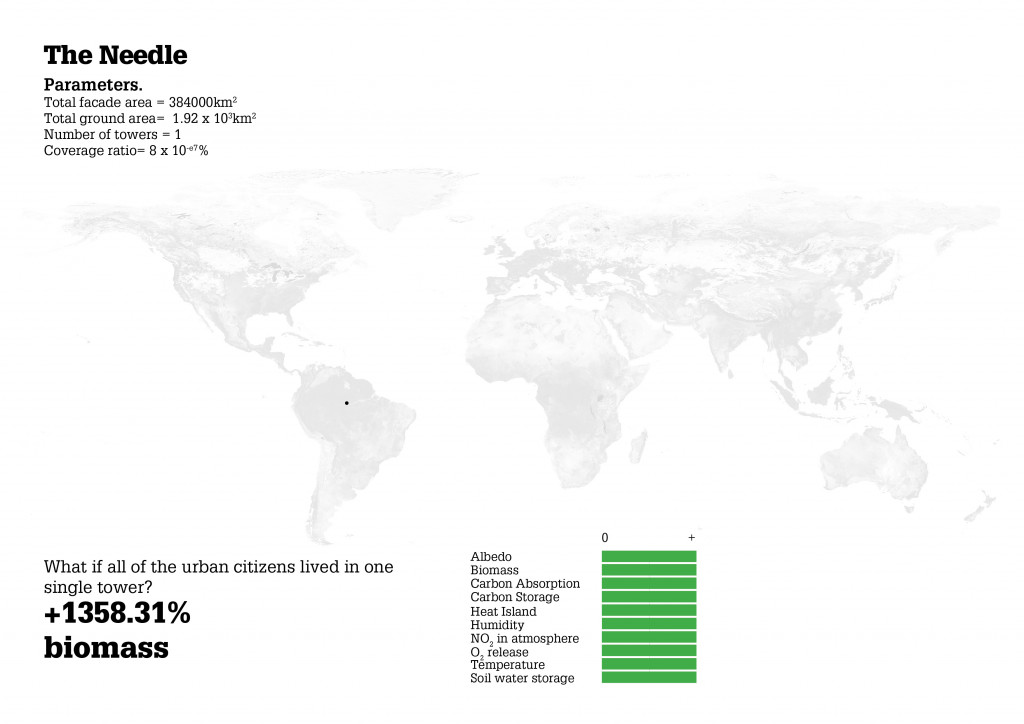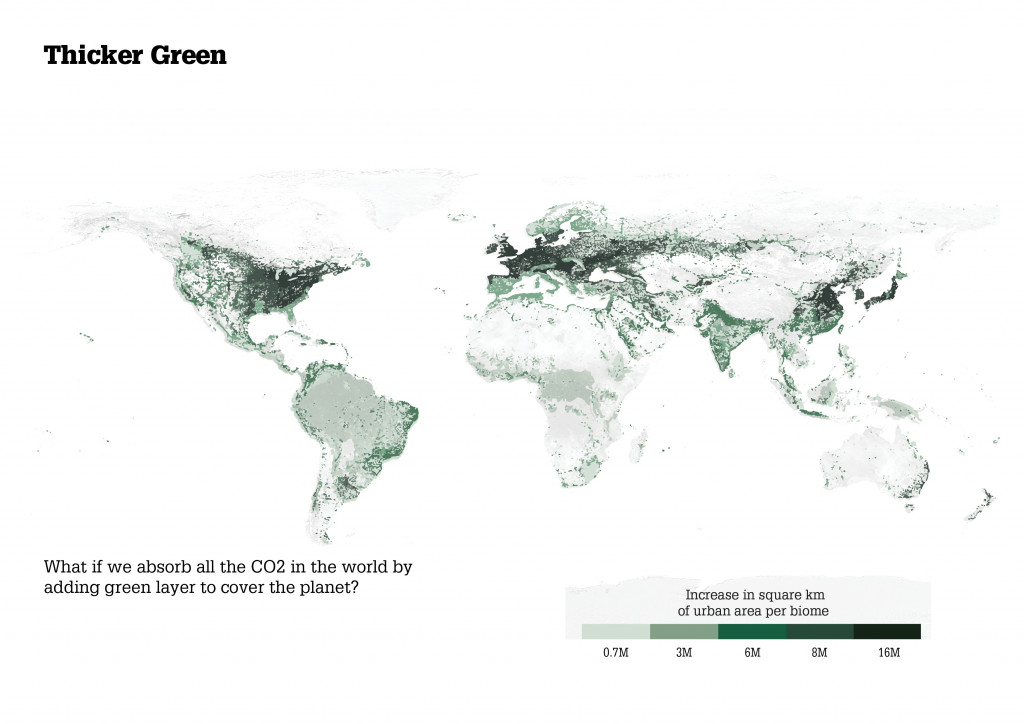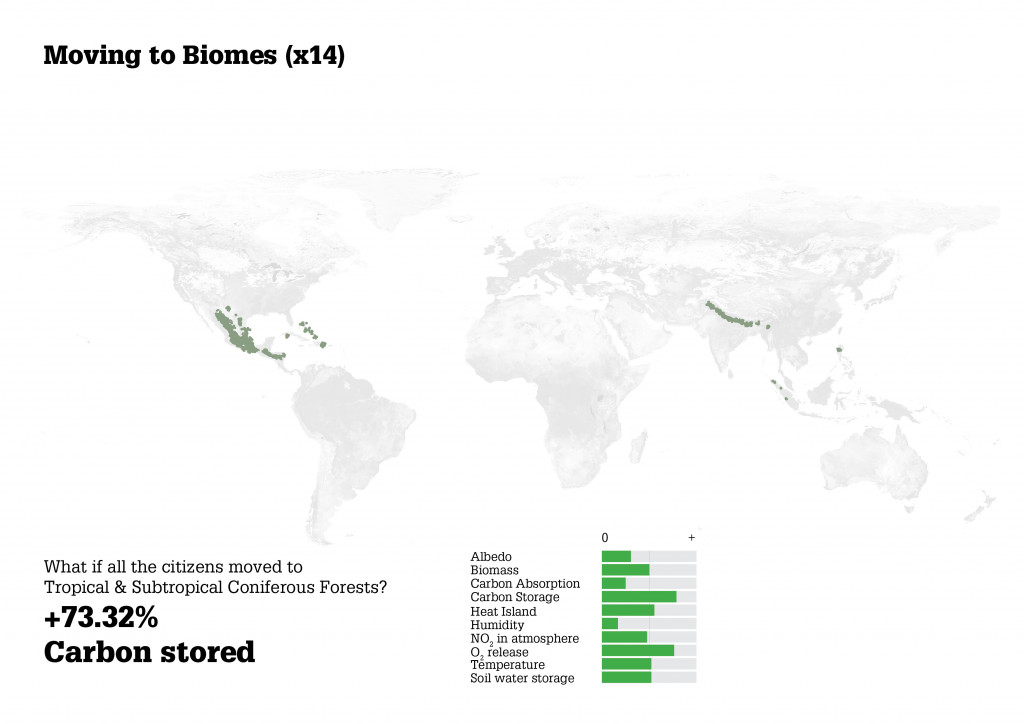COVERING CITIES WITH FOREST
The disregard that the human race has shown to the environment has caused issues. The rising rate of population has caused these issues to become more and more evident in recent years. Topics such as Deforestation, Carbon Emissions, Depleting Bio-Diversity, Desertification, Energy Scarcity, Food Scarcity, Global Warming, Health Risks, and Sea Level rise all have their own respective depressing trends and thus we’ll categorize them as “Urgencies.” These urgencies symbolize that we have to realize today as an inflection point for the planet, which makes us explore creative solutions to these issues.
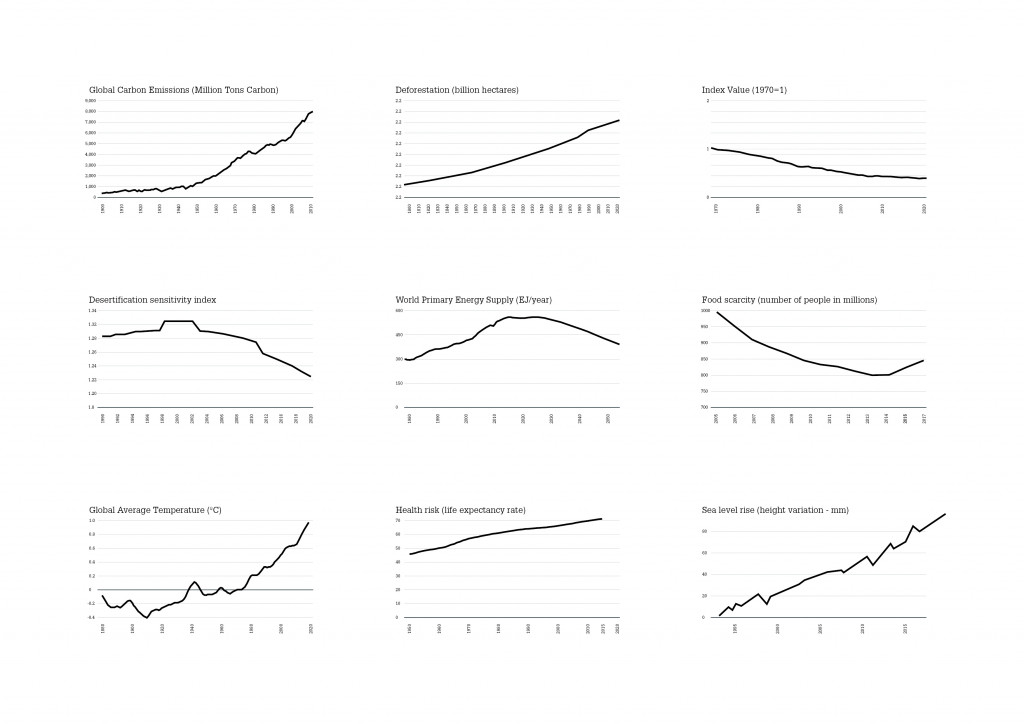
Urgencies
The first step was to lay out the facts about the planet that we are living in. Currently 3% of land area is dedicated to our cities which are responsible for 60% of these climate urgencies. Those cities live on top of particular biomes, which are defined as biotic communities where specific flora and fauna can live within that region’s climate. We’ve classified and mapped these 14 different biomes while showing the percentage of that space dedicated to urbanized land.
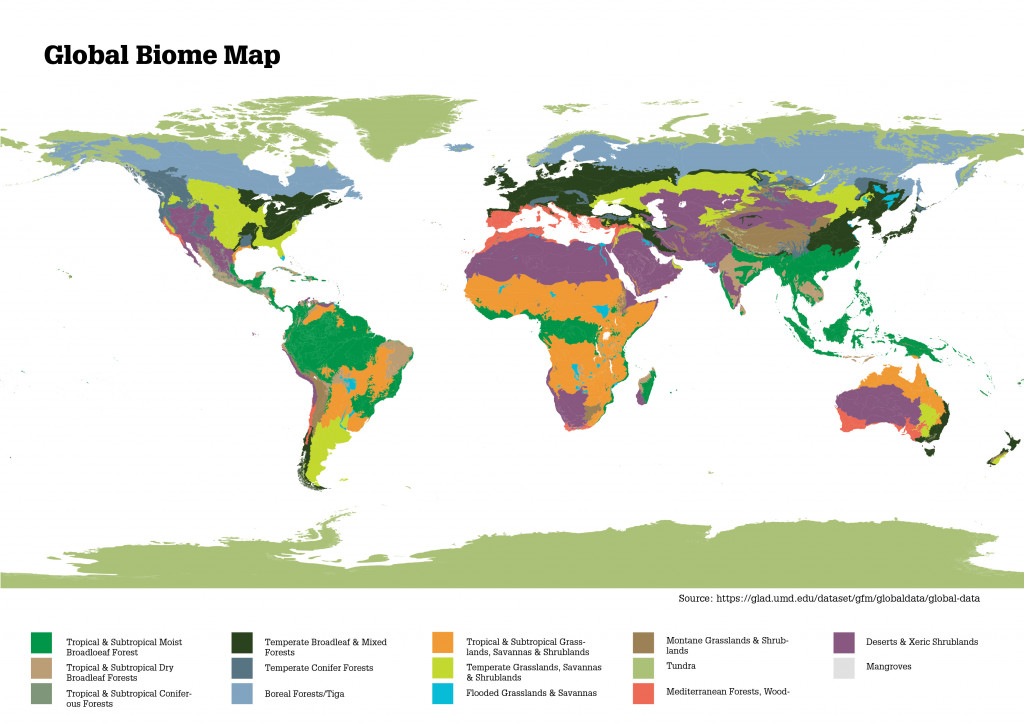
This leads us to The Green Dip exercise. The Green Dip is a research study worked on by The Why Factory in collaboration with IaaC, Columbia University, and Delft that imagines a world of which our cities are covered with forests. Last year, IaaC students within the MACT program created a Green Maker catalog, which lists out all of the floral species that can inhabit a particular biome, the manner of which it can grow in a city within that biome, and the impacts of covering a certain city with green. Therefore, students thoroughly broke down the idea into its components, from the floral level up to the city level.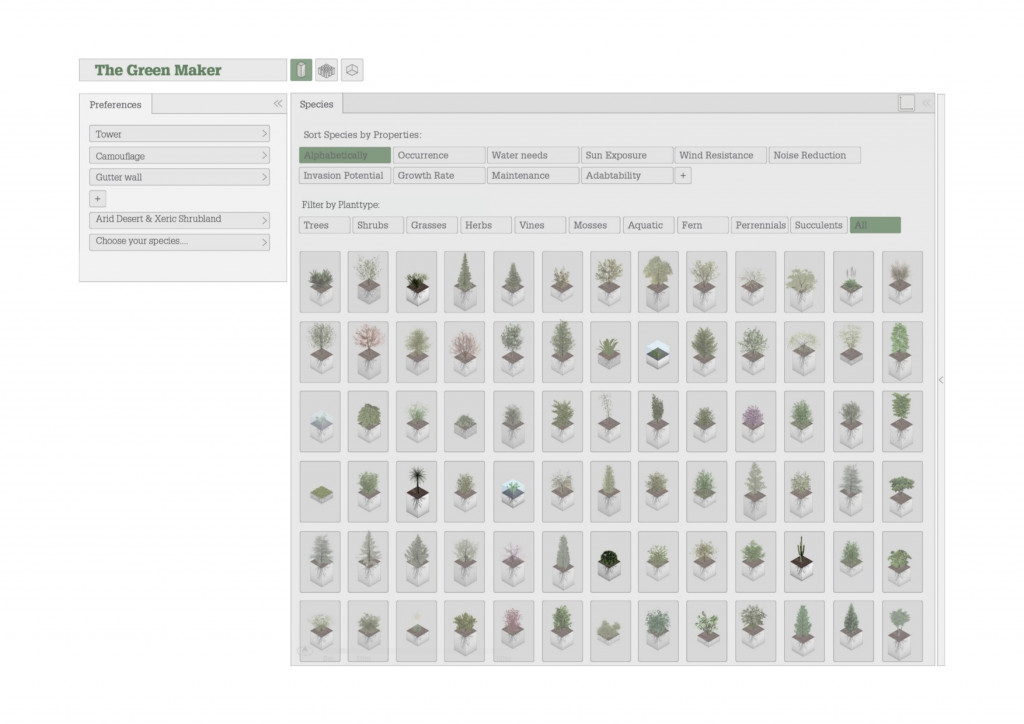
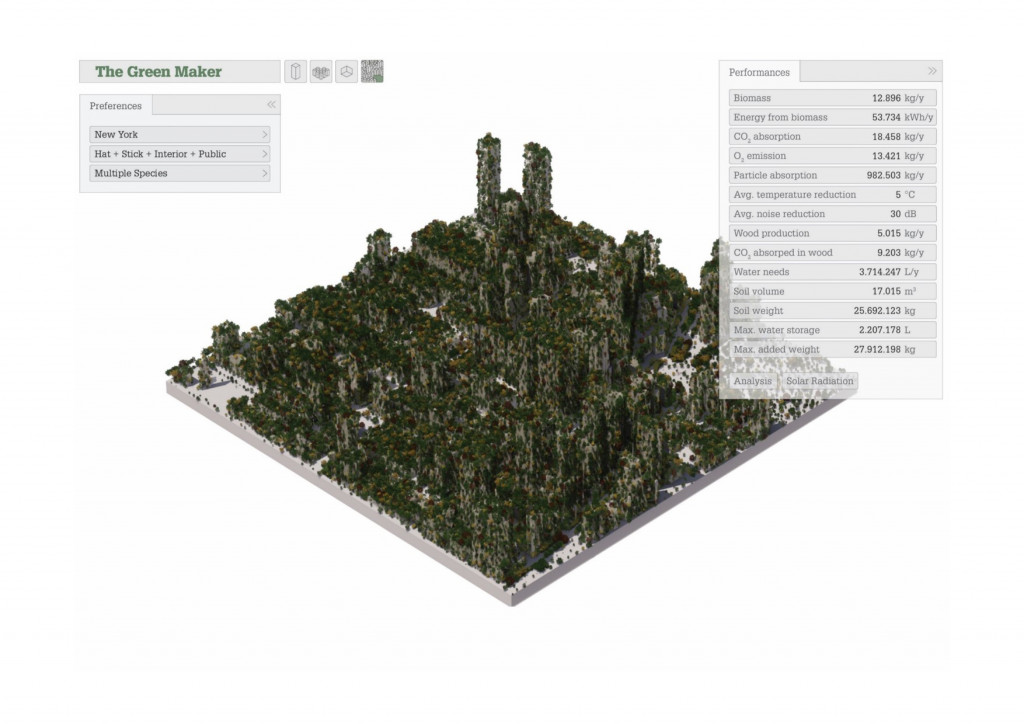
Green Maker Catalogue
The goal of our concluding chapter to the exercise was to take the impact analysis to the planetary scale. Meaning, now that we have the toolset to cover our cities with green, what would the impact be on the planet?
 WHAT IS THE IMPACT?
WHAT IS THE IMPACT?
In order to answer this question, we brainstormed a list of parameters that would be affected by The Green Dip according to the urgencies that we’ve already mentioned. After listing these out from A to Z, we selected a calculable subset that is related to the climate urgencies specifically. These were Albedo, Biomass, Carbon Stored, CO2 absorption and storage, Heat Island Effect, Humidity, NO2 absorption, O2 production, Temperature, Evaporation, and Precipitation. These parameters were researched intensely to ascertain the correct formula and values for each biome. Achieving these parameters on a biome basis allowed us to forecast the impact on a planetary scale by making assumptions on the buildings typologies, understanding the proportion of urban land within each biome, and applying the specific biome values to each parameter. Additionally, we were able to evaluate the best performing biomes for each parameter on a square kilometer basis.
 Here are the calculations of the parameters and their units on a planetary scale from The Green Dip:
Here are the calculations of the parameters and their units on a planetary scale from The Green Dip:
- Albedo (%) (-0.7%)
- Biomass (tonnes) (+19%)
- Carbon stored (gt) (+20%)
- CO2 absorption (Vc Max) (+11.99%)
- H20 storage (mm) (+3.7%)
- Heat Island (deg Celsius) (-0.26 C)
- Humidity (cm) (-2.6%)
- NO2 (-AQI) (-1.4%)
- O2 production (pmm) (+8%)
- Temperature (deg Celsius) (-0.3 C)
LET’S SPECULATE
While these calculations show that The Green Dip would move the needle for these parameters, in reality these numbers still aren’t close to the targets set forth by scientists, researchers, or climatologists. This made us speculate about what we can morph in terms of the 3% and biome infrastructure. As a group, we brainstormed different “what if?” scenarios of which we changed the urban typology, implemented technological solutions, or migrated the population amongst the biomes.

All tested scenarios
For urban typology… what if we all lived in 1 large tower?
For technological solutions… what if we could implement a cloud maker to accelerate precipitation?
For migration… what if we all moved to cities along the equator?
Again we used the methodology of listing these scenarios out A to Z and electing to calculate a subset of those scenarios. After the scenarios were chosen, we assessed the change for the calculations and calculated the difference for each parameter in the same way we did for The Green Dip. This led us to find the highest 3 performing scenarios:
- 1 Tower: “What if we all moved to 1 residential tower?”
- Migration to the biome Tropical and Subtropical Coniferous Forests: “What if we all moved to the Tropical and Subtropical Coniferous Forests biome?”
- Thicker Green: “What if we added a thicker amount of forests to our cities to absorb all of the CO2 we need?”
WHAT IS NEXT?
In conclusion, the group all believed that The Green Dip was a powerful learning exercise in its ability to speculate a world yet provide a real toolset and calculable insights. In times where these urgencies are increasingly prevalent, we need to use speculation more than ever as a tool to shift the given scientific perspective. Since we have focused on certain impacts of The Green Dip, this made us consider the other factors that such a world would bring to society. Some questions that inspire us are:
- What would the effect on the human carbon footprint be if we as people were covered in green and consumed in the environment? Would we drive cars? Would fashion change? Mental health?
- Now that we understand the performance of each biomes, what are the components of each biome that lead them to perform in this manner? How can we hack ecology of these biomes to optimize performance?
- Okay let’s admit it, The Green Dip helps our climate emergencies. So what’s stopping us from doing it? What are the barriers to making our cities more green?
The Green Dip is a project of IAAC, Institute for Advanced Architecture of Catalonia
developed at Master in City and Technology, workshop in 2019/2020 by:
Students: Kushal Saraiya, Elijah Munn, Andrew Saltzman, Alejandro Quinto Ferrández, Linara Salikhova, Rovianne Santiago, Jianne Libunao, Rashid Gilfanov, Jochen Morandell, Byron Esteban Cadena Campos, Akshay Marsute, Pawitra Bureerak, Michelle Carolina Rodríguez Ruiz, Aryo Dhaneswara.
Faculty: Javier Arpa, Adrien Ravon, Lex te Loo, Winy Maas.
